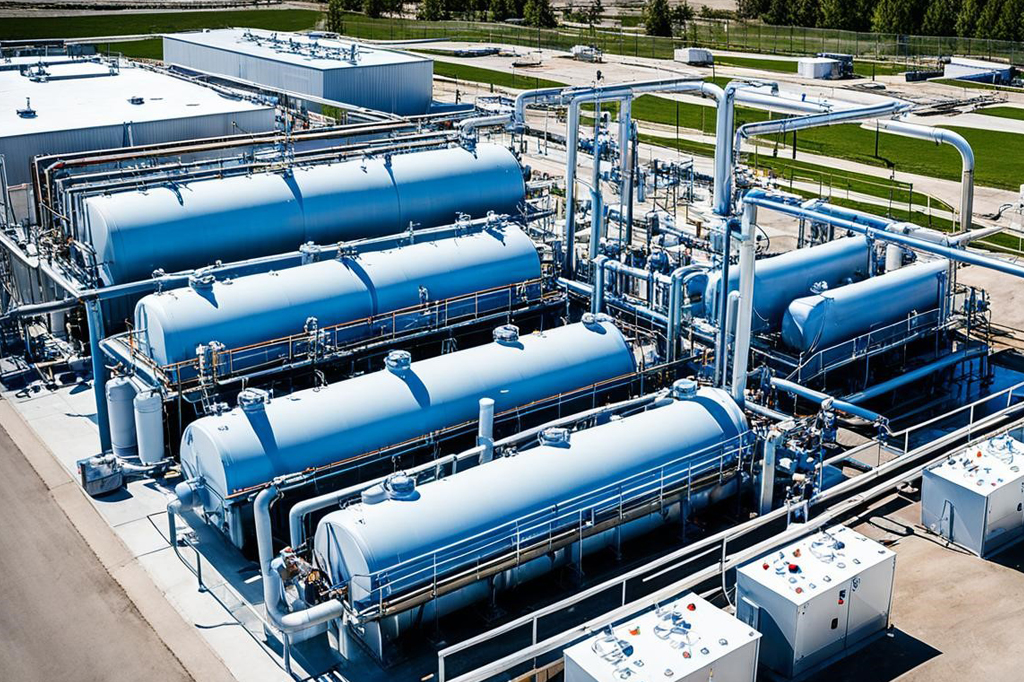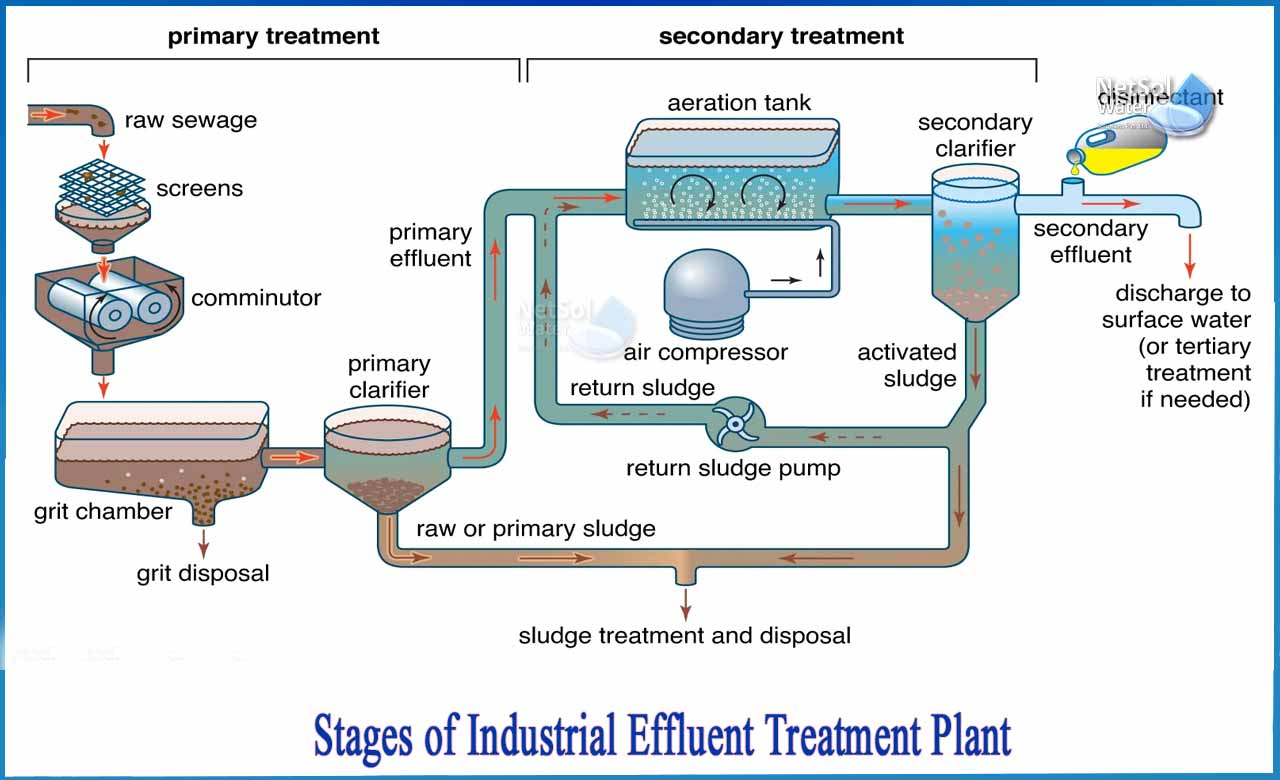Industrial Waste Water Treatment-- Cutting-Edge Technologies for Water Filtration
Industrial Waste Water Treatment-- Cutting-Edge Technologies for Water Filtration
Blog Article
Challenges and Solutions in Hazardous Waste Water Treatment
The treatment of industrial wastewater provides a multifaceted selection of difficulties, varying from strict governing conformity to the intricacies of price management and technological restrictions. The irregularity in waste make-up even more makes complex the effectiveness of traditional therapy methods, often resulting in intensified operational expenditures.
Regulatory Compliance Challenges
Just how can industrial centers browse the complex landscape of regulatory compliance in wastewater treatment? The regulatory structure governing wastewater monitoring is multifaceted, frequently differing by territory and kind of sector. Facilities should abide by federal, state, and regional guidelines that dictate effluent high quality criteria, discharge limits, and tracking requirements. Failing to abide can lead to severe penalties, including fines and functional shutdowns.
To efficiently manage these compliance difficulties, facilities need to carry out durable tracking and reporting systems that make certain real-time information collection and evaluation. Normal audits and danger assessments can recognize prospective conformity voids, enabling aggressive adjustments in therapy processes. Staff member training programs focusing on regulative knowledge and ideal practices are important to promote a society of compliance within the company.
Additionally, involving with regulatory firms can supply valuable understandings and clarify ambiguous guidelines. Facilities might additionally gain from speaking with environmental professionals that specialize in wastewater treatment compliance, making certain that they remain informed of advancing policies. By taking on these strategies, commercial centers can not only fulfill compliance requirements yet also enhance their operational efficiency and ecological stewardship.
Price and Economic Obstacles
Browsing regulative compliance in wastewater treatment commonly provides substantial economic obstacles for commercial facilities. The prices connected with executing necessary therapy innovations, maintaining conformity with rigorous policies, and managing functional expenditures can be intimidating. Lots of companies face high preliminary capital investment for the building or updating of wastewater therapy plants, which may stress budgets, specifically for medium-sized and small enterprises.
Additionally, continuous functional prices, including labor, maintenance, and chemical inputs, add to the monetary burden. The unpredictability of changing energy prices and the possible need for extra investments to meet evolving guidelines aggravate these economic stress. Oftentimes, the absence of monetary motivations or support from federal government bodies makes it a lot more tough for businesses to validate investments in innovative therapy systems.
Furthermore, the economic viability of wastewater treatment options is commonly examined, particularly for industries with limited revenue margins. Consequently, it is vital for industrial centers to check out cost-effective techniques, such as embracing ingenious financing choices, engaging in partnerships, and leveraging arising technologies that can aid reduce these economic barriers while guaranteeing conformity with ecological standards.

Technological Limitations
Countless technical limitations impede the efficiency of commercial wastewater therapy procedures. One considerable challenge is the insufficiency of existing treatment technologies to deal with complex contaminants. Numerous traditional techniques, such as turned on sludge and chemical rainfall, fight with the removal of emerging contaminants, including microplastics and pharmaceuticals. This limitation often causes the discharge of inadequately treated water, which can have damaging environmental effects.
In addition, the scalability of treatment technologies postures a challenge. While some advanced methods, like membrane layer filtering or sophisticated oxidation, show pledge in regulated atmospheres, their application on a bigger range can be much too costly and technically tough. Maintenance and functional intricacies further complicate the fostering of these systems, specifically for smaller industries with restricted technological proficiency.
The combination of real-time surveillance technologies also stays inadequate in several therapy facilities. Without effective monitoring systems, operators can not appropriately assess treatment efficiency or spot prospective failings, causing irregular effluent top quality. Attending to these technical restrictions with research and development, along with financial investment in ingenious services, anonymous is important for enhancing the efficacy of commercial wastewater therapy and making sure regulatory compliance.
Irregularity in Waste Structure
In the realm of commercial wastewater therapy, the variability in waste composition offers a powerful challenge. Industries create wastewater with varied qualities, influenced by variables such as production processes, resources, and operational practices. This diversification complicates the therapy process, as conventional systems usually have a hard time to efficiently address the wide variety of toxins present.
For circumstances, wastewater from food handling may consist of high levels of raw material, while effluents from chemical production could consist of hazardous materials and heavy steels. This variation demands versatile treatment approaches to make certain compliance with ecological regulations and secure public wellness. In addition, changes in waste composition can occur with time, influenced by adjustments in production timetables, upkeep activities, or the intro of new items.

Cutting-edge Treatment Solutions
Ingenious therapy services are crucial for dealing with the intricacies of industrial wastewater administration. Typical methods usually fall short in properly removing a variety of contaminants, especially in centers with diverse effluent streams. Recent improvements concentrate on integrating advanced modern technologies to boost treatment effectiveness and sustainability.
One appealing strategy is using more helpful hints sophisticated oxidation procedures (AOPs), which utilize effective oxidants to degrade organic contaminants. AOPs, consisting of photocatalysis and ozonation, can dramatically reduce toxic compounds and enhance effluent high quality. In addition, membrane layer bioreactor (MBR) modern technology has gained traction, page combining biological treatment with membrane filtration, leading to top notch effluent and minimized impact.
An additional cutting-edge remedy is the execution of source recuperation systems. Methods like anaerobic digestion not only treat wastewater but also produce biogas, which can be harnessed as a renewable energy resource. In addition, the fostering of expert system and maker discovering designs can enhance treatment procedures by anticipating variations in wastewater composition, consequently enhancing functional performance.
These ingenious services not only address governing compliance but additionally promote ecological sustainability, leading the way for an extra durable and efficient commercial environment.
Final Thought
In final thought, attending to the obstacles of commercial wastewater therapy requires a multifaceted method that incorporates governing conformity, expense monitoring, and technical advancements. A commitment to continuous improvement in treatment approaches will eventually add to the efficient administration of commercial wastewater and ecological security.
The therapy of commercial wastewater provides a diverse variety of difficulties, ranging from strict regulative compliance to the complexities of cost administration and technical constraints. Industrial Waste Water Treatment.Browsing regulative compliance in wastewater treatment frequently offers significant economic obstacles for commercial facilities. Dealing with these technological limitations via study and advancement, together with investment in ingenious solutions, is vital for improving the efficacy of industrial wastewater therapy and making certain governing conformity
Wastewater treatment centers should spend in robust monitoring systems and flexible treatment modern technologies capable of accommodating varying influent attributes.In final thought, dealing with the obstacles of industrial wastewater therapy needs a diverse method that incorporates regulative conformity, cost administration, and technical advancements.
Report this page